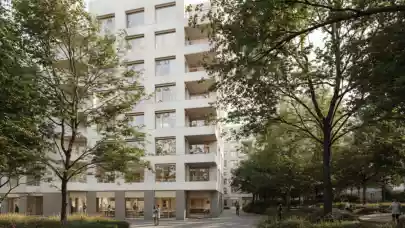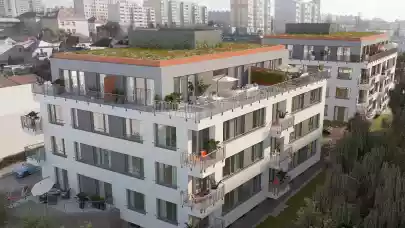
Poland’s total industrial stock at the end of Q1 2020 amounted to over 18.95 million sqm (+15% y/y). The quarter’s solid results were driven by steady tenant demand as well as stable rental rates, which despite the growing COVID-19 pandemic maintained their height in most markets. On the investment side, only in Q1 2020, the volume of transactions was comparable with the whole of 2019.
“The first months on the investment market were very optimistic, especially in the industrial sector. We can observe an increased interest in portfolio transactions. The COVID-19 pandemic caused a slowdown in the market, however, property valuations at the end of the first quarter were generally unchanged due to a lack of transaction basis and contained information about increased market risk. We expect that nervousness’s likely to result in declines in capital values in the short term, albeit mainly for non-prime product,” comments Renata Osiecka, Managing Director at Axi Immo.
The investment market under the sign of portfolio transactions
Transactions on the logistics market dominated investor activity in the first quarter of 2020. In total, owners changed portfolios worth €1.46 billion. The obtained result was almost the same amount as in the entire 2019 when the total volume equalled €1.48 billion. The largest transactions included the takeover of all of Goodman's CEE assets by GLP Group (approx. 880,000 sqm - Polish part of the portfolio 66% of the total). Next was Savills IM’s purchase of the Panattoni portfolio (approx. 250,000 sqm) and the European Maximus portfolio (approx. 150,000 sqm - 6 parks in Poland; a total of 28 parks in the portfolio), where the seller was Apollo Global Management and the buyer was P3 (part of GIC).
High demand in spite of the pandemic
In the first quarter of 2020, the demand for modern warehouse space in Poland remained at a high level. Gross demand amounted to over 950,000 sqm (-5% y/y) and net demand (new contracts and expansions) reached 787,000 sqm (16.7% y/y) and accounted for 82% of the total volume of lease transactions. The most active sectors were logistics (33%), commerce (19.5%), electronics (13%), FMCG (6%) and e-commerce (5.5%). Warsaw (292,000 sqm), Upper Silesia and Lower Silesia attracted the most attention of tenants. Concerning the size of the market to the leased space, the Tri-City was the leader with 7.4%, ahead of Warsaw (7%), and Eastern Poland (5%).
“Despite the expanding COVID-19 pandemic, transactions in an advanced process of leasing were first entered into the warehouse market; still, many companies are engaged in negotiations. We are observing currently relatively less new queries, most of which relate to short-term contracts. However, opening up the economy should successively increase the activity of tenant,” says Anna Głowacz, Head of the Industrial and Logistics Agency at Axi Immo.
High developers activity maintained
In the first quarter of 2020, developers completed 440,000 sqm (-27.2% y/y) of the industrial space. The largest projects were BTS P3 PepsiCo (58,500 sqm) in the Warsaw suburbs, Hillwood Wroclaw East II (52,400 sqm) in the Wrocław region and two Panattoni projects 36,600 sqm in Bydgoszcz and 36,500 sqm in Upper Silesia. The new supply resulted in approaching the border of 19 million sqm in the total stock of the warehouse market in Poland. Most space was delivered in Lower Silesia (over 160,000 sqm), in the Warsaw region (115,000 sqm) and Upper Silesia (66,000 sqm). Within the projects under construction, there is approx. 2.07 million sqm (+ 2.6% y/y), of which 45.2% is speculative space. Interestingly, the Tri-City with 268,000 sqm is the market leader in relation to the space under construction, which accounts for 42% of its current stock.
Vacancy in an upward trend
A high rate of speculative space affected on a vacancy rate which rose 2.4% pp. (y/y) and currently amounts to 7.8%. The most ready-to-occupy space is in Central Poland (over 370,000 sqm), which represents 11.8% of the total stock of this market. However, in percentage, the most available space was recorded in Kielce (35.6%), and the least in Western Poland and Eastern Poland.
Rental rates at a stable level
Rents were stable throughout the first quarter in the majority of locations. The average base rates range between €3.2 - 3.6/sqm. Traditionally, Warsaw is an exception in the list, where rents start from €4.8 / sqm.
“After considering rental holidays and incentives from developers, effective rates are respectively 15 to 25% lower, and their final amount depends on the number and quality of competing schemes in a given location. On average, urban projects are 10% more expensive than big boxes facilities Last-mile projects are on average 10% more expensive than big box investments,” explains Anna Głowacz.
Outlook
The spreading COVID-19 pandemic has meant that the coming months for the industrial sector and the entire economy are a period of many challenges. However, according to the European Commission’s forecasts, Polish GDP should decline by 4.3% in 2020. It is the smallest projected decline of all EU countries and is well below the 7.4% fall expected for the EU as a whole.
On the demand side, short-term contracts and extensions will dominate the market in the next quarter. On the supply side, we can expect less new investments due to stricter financing conditions. On the other hand, companies will be under pressure to modify their supply chains to the new reality, notably to develop e-commerce channels in response to the rapid growth of online sales, which may affect the greater demand on last-mile logistics assets.
One of the consequences of a pandemic may be the deglobalization of supply chains. Companies will be interested in increasing security in this area; and Poland, due to being an important "near-shoring" location in Europe and well-integrated with European supply chains and transport networks, rose as the main beneficiary of this situation.



